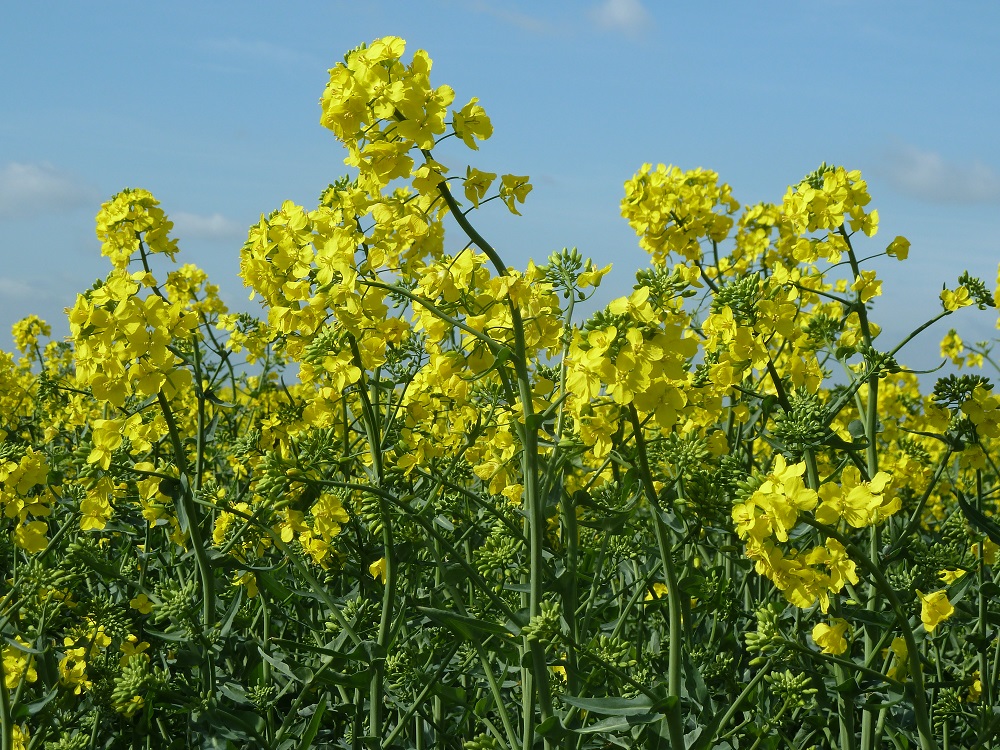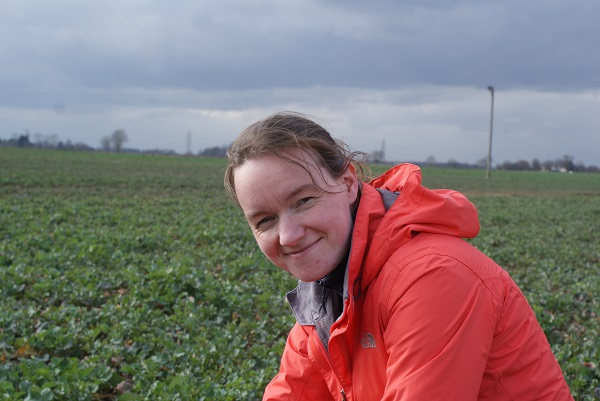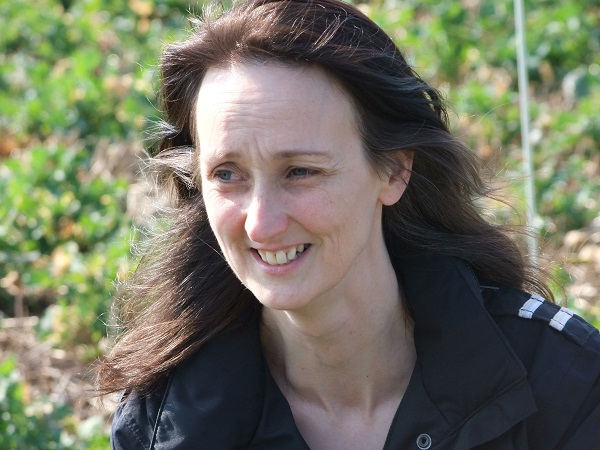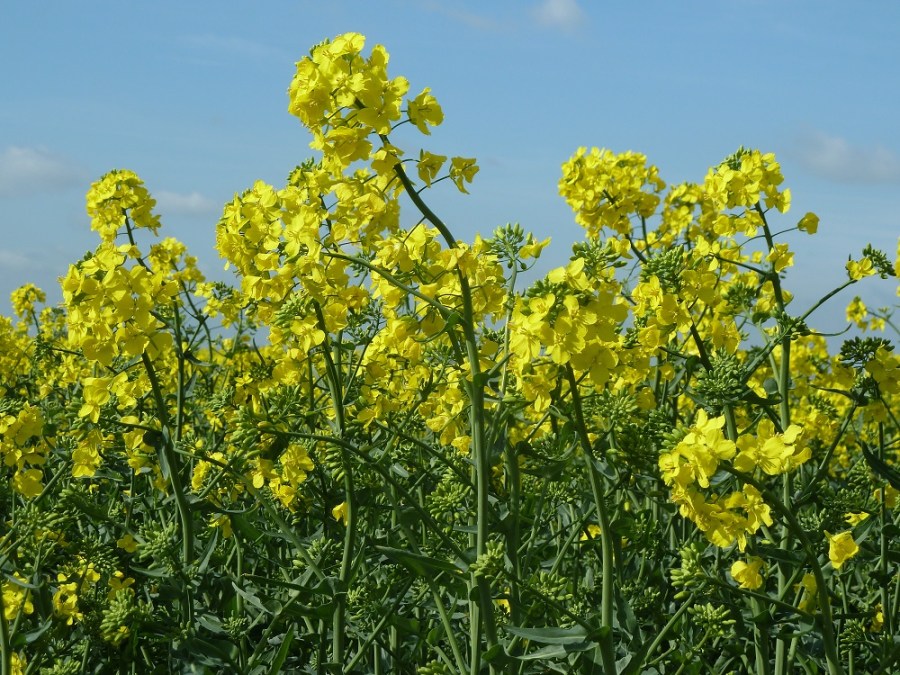 With disease levels in oilseed rape crops already high, priority is now switching to late season management. CPM gathers some advice.
With disease levels in oilseed rape crops already high, priority is now switching to late season management. CPM gathers some advice.
Late N applications this season may be crucial to keep feeding canopies.
By Lucy de la Pasture

The levels of LLS are worse than any seen over the past ten years, says Faye Ritchie.
This season it’s all been about light leaf spot (LLS). According to ADAS senior research consultant, Dr Faye
Ritchie, the levels of LLS are worse than any seen over the past ten years.
“LLS isn’t inhibited by cold conditions but the mild winter provided ideal conditions for it to keep cycling in and infecting the oilseed rape crop. Disease levels do vary widely from field to field,” she says.
“Pod infection can cause yield loss, therefore further treatment may need to be considered before and during flowering if the LLS is present and weather remains favourable for disease development.”
ADAS plant pathologist, Julie Smith, believes we have a timing issue with LLS and compared with other OSR diseases, it’s something that’s not being well controlled. “Historically we’ve been very focused on phoma, where timings are easy to predict and good models are available. LLS isn’t as well targeted, it’s not always spotted in the early stages and a threshold for treatment hasn’t been defined.
“There’s been an assumption that if you’ve applied a phoma spray then it’ll also take care of LLS. The trouble is that if LLS gets hold then it’s very difficult to treat in a curative situation,” she says. “With sclerotinia sprays just around the corner, it may be a good time to switch out of azole chemistry as part of a good resistance management strategy.”
Greening effect
Fungicides containing the SDHI, boscalid (in Pictor, Tectura, Filan) have long been noted to sometimes produce a greening effect and it’s something else to bear in mind when considering sclerotinia treatment, believes Clare Tucker of BASF.
“We noticed that across our data set, generated from trials work over the past few years, there was consistently a yield response of 0.28t/ha on average over 48 trials. What was interesting was that this response was seen in trials where there were no visible signs of foliar disease and Pictor (boscalid+ dimoxystrobin) was used as a sclerotinia treatment. That indicated that something other than disease control was responsible for the yield response,” she explains.

A small increase in GLAI equated to a 5% increase in intercepted light at the end of flowering and ultimately a yield response of around 0.3t/ha, says Julie Smith
ADAS have been looking into this ‘unidentified effect’ further and have seen a similar yield response of 0.23t/ha over the past three years, also in the absence of visible disease. Julie Smith has been using Healthy Area Duration (HAD) to look for physiological effects under normal field conditions that may explain the yield responses.
“HAD is an integral of green leaf area index (GLAI) over time so essentially is an indicator of how large and green the crop is and for how long it stays green. We measured GLAI over the critical period from mid-flowering to green seed,” she explains, adding that it’s an important distinction that they’re looking at leaves rather than the whole canopy.
“In 2014 there was a significant yield increase where crops were treated with Pictor at mid-flower and we weren’t unable to account for this through disease control. What we found was that a small increase in GLAI (0.2 units) equated to a 5% increase in intercepted light at the end of flowering and ultimately a yield response of approx. 0.3t/ha.”
In the 2014 season, each unit of HAD increased yield by approx. 0.04t/ha showing the effect of keeping the leaves greener for longer so it can intercept more light. One of the effects noted when Pictor (boscalid+ dimoxystrobin) was applied was an increase in water use efficiency which could potentially act as a buffer against some of the factors that might reduce yield, such as water stress.
Clare Tucker explains that the OSR crop isn’t good at dealing with drought stress. “OSR plants under stress have poor stomatal control and tend to shut down, reducing photosynthesis. Leaf senescence occurs and ultimately there’ll be increased pod loss and shatter.”
Asked what the findings mean to him, Oxon OSR grower James Price is impressed enough to give Pictor a try this season. Historically, sclerotinia treatments on the farm have been cheap and cheerful, based around Prosaro (prothioconazole+ tebuconazole).
Protracted flowering
“We usually apply one treatment at flowering unless it’s a season with a very protracted flowering period, when a second sclerotinia spray will go on. Much of our soil is drought prone, so the possible buffering effects of Pictor is something I’m interested in,” he explains.
“If we can help increase HAD and the plant can then withstand a degree of moisture stress without losing yield, then that would be of benefit to us – particularly as we tend to get a dry May and June. The only way to find out is to try it,” he says.
A further benefit of using Pictor at the sclerotinia timing this season is it has good efficacy on LLS, so a useful top-up treatment to prevent it from reaching the top of the pod canopy, adds Clare Tucker.
Yara agronomist, Ian Matts, agrees that when it comes to the canopy, it’s not all about size but about how long it lasts. The longer the canopy remains green, the more energy goes into pod fill and ultimately yield.
“Late N applications this season may be crucial to keep feeding canopies, especially where early N was significantly reduced because of canopy size. Where plant numbers are high and the canopy is dense, then there’s more competition between plants for N and a possibility that crops may run out of steam”, he explains. “We could see a more exaggerated effect this season because crops were so forward into the spring.”
Unlike in cereals where late N doesn’t usually equate with increased yield responses, Yara trials have consistently demonstrated benefits of 0.35t/ha from mid-flowering foliar applications, according to Ian Matts. “The only time we’ve seen a detrimental effect on yield is when N applications were made when it was too hot and the crop was stressed,” he clarifies.
“40-60 kgN/ha is the optimum dose for a late application, with the higher dose likely to be necessary where N was restricted in early spring to prevent the canopy over-developing,” he says. “N at this timing helps feed the OSR plant, which can’t mobilise carbohydrates around the plant as effectively as cereals and isn’t as able to take up N from the soil as efficiently after mid-flowering.”
Historically, late N was timed at the end of the flowering period to avoid coating petals with nitrogen that’ll then drop to the ground and become unavailable to the plant. Recent trials indicate there isn’t a stand-out timing and applications during early, mid and late flowering all give similar results, meaning application can be timed from flowering onwards, reckons Ian Matts.
“That means you can time application to mix in with the sclerotinia sprays and avoid having to make an extra pass through the crop.”
But what if you’re getting close to the N-max limit? Should you knock a bit of N off the spring dose to allow room to put extra N on at flowering?
“In a normal season I would usually say no but this year my advice is changing on this. Crops are growing under a completely different set of circumstances than in a more normal season and applying late N this season is likely to pay dividends. However, with the forward crops this year, the risk of breaching the N-max limit is reduced.”





